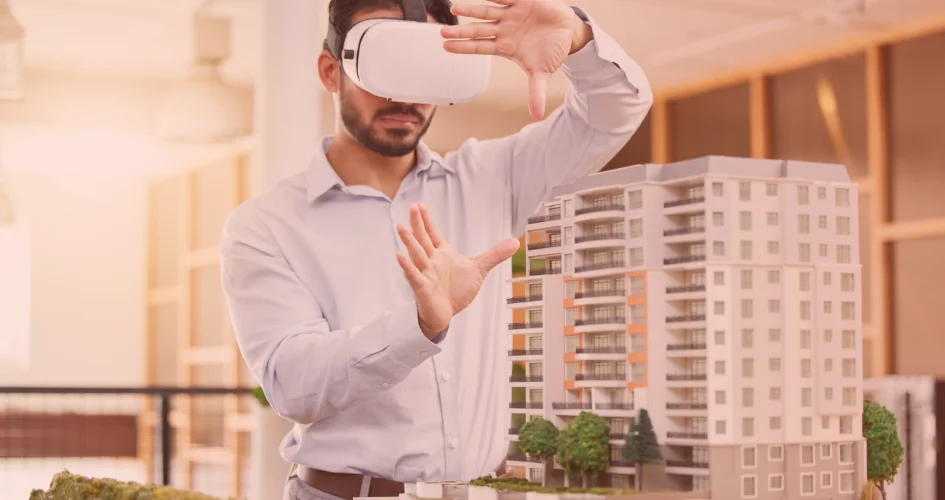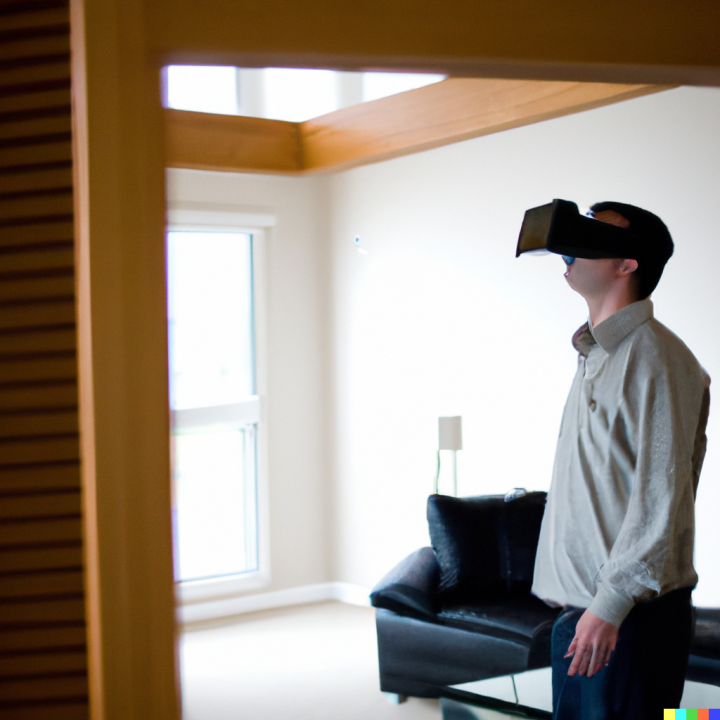Balancing Virtual Exploration with the Value of Physical Visits
The integration of augmented reality (AR) technology into the real estate sector has brought about significant benefits for both buyers and realtors alike. Prospective buyers can now conveniently tour properties virtually, allowing them to explore homes at their leisure from the comfort of their own homes. This elevated presentation of properties provides buyers with a more immersive experience, facilitating informed decision-making. Additionally, AR has transformed property marketing into an interactive process, enabling real estate brokers to create augmented reality brochures and experiences that offer detailed information about properties. Furthermore, AR enhances transparency in the real estate market by allowing investors and buyers to examine properties more readily, zooming in on inaccessible areas and making informed decisions with the aid of technology. The transaction process has also been streamlined through AR, as buyers can now complete purchases remotely, leading to an increase in international deals and promoting sustainability by reducing the need for in-person visits. Overall, AR empowers buyers to better explore properties, experiment with furnishings and décor, and make informed decisions quickly in today’s competitive market environment.

Despite the advancements in augmented reality (AR) and virtual reality (VR) technologies revolutionising the real estate sector, many individuals still prefer visiting property sites in person rather than relying solely on virtual experiences. This preference stems from the inherent benefits of physical presence, which allows for a more authentic and sensory experience, enabling potential buyers or renters to assess the atmosphere, layout, and overall vibe of the property firsthand. Moreover, in-person inspections contribute to building trust and validating the authenticity of the property, which may not be fully established through virtual means. Additionally, physical visits provide a better understanding of the contextual factors, such as neighbourhood amenities and community atmosphere, which are essential considerations for many individuals. Furthermore, unique features and personal preferences are best assessed onsite, and complex properties may require in-depth exploration and clarification that virtual tours cannot provide. Finally, emotional connections with the property are often developed more effectively through physical visits, as individuals can envision themselves living or working in the space. Therefore, while AR and VR technologies offer convenience and accessibility, the combination of virtual and physical experiences ensures a more comprehensive evaluation of properties, catering to the diverse needs and preferences of prospective buyers and renters.
The Future of AR/VR in Indian Real Estate Market
In the Indian real estate sector, augmented reality has a bright future, it has existed for some time now but is gaining traction only now. Praveen Kumar Nandkumar, the Director, of Unishire, one of the most innovative companies in real estate in India states in an article for 99 acres, “AR is already popular in our country and every day it is gaining popularity and spreading to various industries”.
This cutting-edge technology has the potential to empower, engage, and improve people, making it a surefire standard in the business, albeit it may take us a bit longer to fully immerse ourselves within the technology and make it a norm. It is believed that from 2021 to 2026, the AR/VR market is anticipated to expand at a noteworthy compound annual growth rate (CAGR) of 30%. This expansion suggests that the Indian real estate sector is starting to grasp the significant advantages these technologies offer in terms of marketing, property visualisation, and improving client experiences. According to a survey by Magicbricks, a well-known Indian real estate marketplace, the majority of homebuyers (88%) think virtual reality technology is useful for shortlisting houses without having to visit the site. Buyers who like to research choices from the comfort of their homes or who live far away from the property will find particular value in this trend. Potential Indian buyers can enjoy distinctive and captivating experiences using VR and AR technologies. They may virtually walk through properties with them, giving them an accurate impression of the layout and atmosphere. This degree of immersion experience improves openness and helps them make wiser choices. A Goldman Sachs report projects that by 2025, VR and AR technologies will bring up to $2.6 billion to India’s real estate market, mostly as a result of increased buyer happiness and engagement.
Downsides of Augmented Reality/Virtual Reality in the Indian Market
Even though AR has a lot of potential, the Indian real estate sector presents obstacles. The widespread adoption of AR is hampered by difficulties linked to limited resources and accessibility in rural estates. Furthermore, there aren’t many institutions and organisations providing instruction on augmented reality and the creation of cutting-edge VR and AR technology. The adoption of AR is also significantly hampered by industry professionals’ aversion to change.
Companies and apps using Augmented Reality in Indian Real Estate Market
The technology presently is used by large real estate enterprises, such as Geopreneur Group based in Mumbai. According to Rohan Agarwal, its Managing director, this tool is used from time to time as it helps us bring more life to our products and enhances the buying experience of a consumer.
Companies such as eXp India are prime examples of how VR is being used in the Indian real estate market. The business model of eXp India, which is a subsidiary of eXp World Holdings, is immersive and virtual. They provide a platform so agents may provide clients with virtual tours of homes. When there are few opportunities for in-person property visits, as was the case during the COVID-19 pandemic, these models have shown to be quite helpful. An example of the applications used for AR/VR experience is PropTech, sometimes known as ReTech, which gives customers instant access to customised recommendations that meet their needs. With the use of 2D/3D modelling, augmented reality (AR), virtual reality (VR), and audio-visual representation, customers can have an immersive experience with the property even if they are not physically present.
The concept of combining technology and real estate is still relatively new in India; the goal is to achieve greater levels of efficiency, transparency, and commitment fulfilment rather than to replace processes with technology. Real estate and technology work closely together to save time, money, and resources, which benefits buyers, developers, and sustainability in general. While there has been a noticeable increase in the use of technology in the real estate industry during the recent pandemic, indicating that it is an excellent enabler. Modern technology is transformative and shall give buyers in real estate more power and influence over their real estate experience while sitting within the comforts of their homes.
References
- https://www.hindustantimes.com/ht-insight/future-tech/augmented-reality-transforming-the-way-we-experience-real-estate-101700111008119.html
- https://timesofindia.indiatimes.com/blogs/voices/the-changing-face-of-real-estate-in-an-era-of-new-age-technology/
- https://housing.com/news/what-is-augmented-reality-in-real-estate-sector-what-is-its-impact/
- https://www.constructionweekonline.in/people/a-technological-revolution-is-transforming-indias-real-estate-landscape.
- https://www.themediaant.com/blog/rise-of-ar-and-vr-in-real-estate-marketing/
- https://www.99acres.com/articles/augmented-reality-gaining-popularity-in-indian-real-estate.html
10 Best Examples of Adaptive Re-Use of Historic Buildings and Monuments Throughout the World






